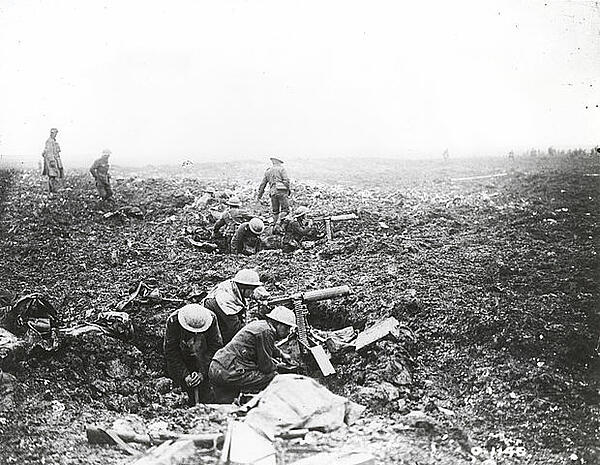Vimy Ridge Tunnels
Vimy Ridge offered its occupants brilliant views over the local area - with Hill 145 at Vimy Ridge the highest point in the region. In fact, the Allies saw the German occupation of the right as a serious threat to any advance they wanted to make in the Somme region in 1917. As a result, the decision was made that it must be taken, and this task was given to the Canadians.
The Canadian commanders made it their mission to remove the Germans from the ridge while enduring the lowest number of casualties possible, which was a difficult target to achieve due to how well dug in the enemy soldiers were. However, the Canadians decided to use tunnels to provide them with underground protection and to give them access to the ground underneath German lines. This would allow them to advance on the Germans while they were completely disorientated.
In total, it is believed that there are around 10 miles of tunnels at Vimy Ridge, with the deepest dug to 100 feet. Historians believe the Allies would have needed around 1,000 miners at Vimy Ridge, all of whom would have faced the many dangers of tunnel diffing including the need to work in almost complete silence to avoid German detection. This was particularly crucial as the Allies were aware that the Germans were also tunnelling, so could stumble across the Allies at any time.
The tunnels under Vimy Ridge have been described by many as an underground city, providing the Allies with bedrooms, kitchens, electricity and fresh air, as well as 14 ‘subways’ where soldiers could wait before they were called to the front line.
While this ‘city’ was a lot safer for the soldiers, the tunnels were not popular as they were too narrow and short, making them claustrophobic when filled with troops.

Following the disasters that had taken place during the Battle of the Somme, Generals Currie and Byng - who commanded the Canadian Army - wanted to ensure they used the most modern approaches possible. In particular, they wanted to make sure the artillery barrage that preceded their attack was accurate. They did this by firing one million shells in the seven days before their assault, and by using Canadian spotters to ensure the set targets had been destroyed. In fact, the shelling was so successful that it was referred to by the germans as a ‘week of suffering’. On 8th April, the day before they advanced, the Canadians estimated that they had destroyed 83 per cent of the German’s artillery.
Learning from the Somme, Currie also ensured that junior commanders were capable of making snap decisions on the spot, without having to relay information back to their superiors. This meant that the speed of decision-making became one of the key features of the Canadian attack on Vimy Ridge and the Canadians were able to sustain their attack and make it hard for the enemy to reorganise.
The infantry were also used to great effect, with select groups being kept back in order to deal with any surviving Germans who had not been killed in the initial advance. This provided the front infantry with more confidence when dealing with the enemy.
As a result of this careful planning and excellent organisation, the Canadians took Vimy Ridge in just four days. The victory was the first major Allied victory in 18 months and cost the Canadians just 3,600 casualties. They also gained command over a strategic location that helped the Allied nations greatly as the war progressed.
MLA Citation/Reference
"Vimy Ridge Tunnels". HistoryLearning.com. 2025. Web.
